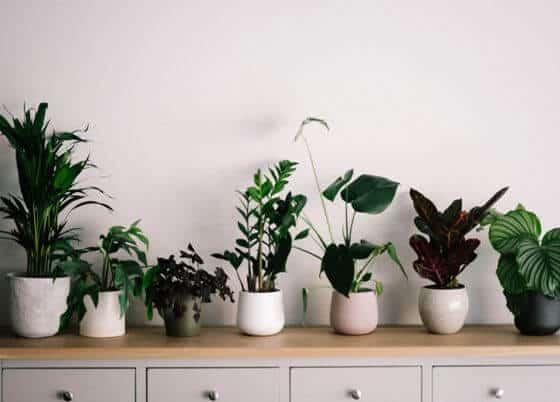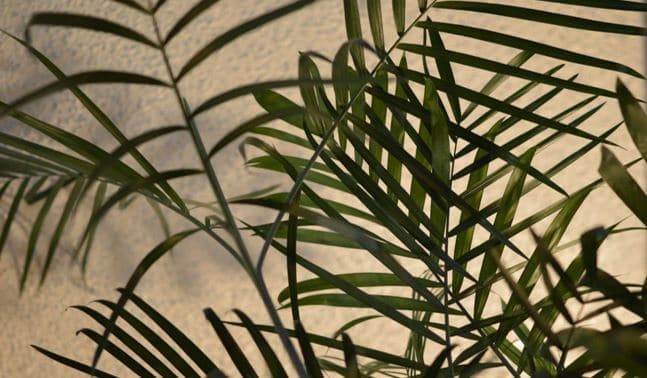Last Updated on January 6, 2023 by a Friendly Gardener
The chambira plant is a small palm tree that belongs to the Arecaceae family. Botanically, the bigger tree is named the Astrocaryum chambira, whereas the smaller houseplant is more common as the Chamaedorea elegans, also known as the parlor plant.
Native to parts of the Amazon rainforest in Mexico, Venezuela, Guatemala, and Peru, the chambira plant has thin and long leaves that grow outwards from a central stem.
It is possible for you to grow and propagate this plant on your own, for which you will need to follow the right process while also taking good care of the plant. This article will take you through everything you should know about this.
How to Grow the Chambira Plant
If you want to grow the chambira as an indoor plant, you can make use of seeds, although many of these plants are directly sold as seedlings too that you can simply continue to care for.
Note that you might not be able to use cuttings to grow this plant since these are difficult to obtain without harming the roots of the parent plant.
For the seeds, you will need to seek a dependable source who can sell them to you. You can look for them in online stores or you can visit a local shop or nursery where you can also learn a bit about the propagation and care process.
Once you obtain the seeds, you can go through the following steps.
- A good idea is to first soak the seeds for some time in a bowl of water so that they can germinate faster. You can skip this step, but this means you might need to wait longer for the germination process.
- Once you have soaked them for half a day, you can take a pot full of the required soil and sow the seeds an inch or so deep. You can also sow them in the garden soil.
- Make sure you cover the seeds with a layer of soil instead of exposing them directly to the air and sun. Spray a small amount of water over the soil to encourage growth.
- Now that the sowing process is complete, place the pot where it can receive bright but indirect sunlight.
Chambira Plant Care

It is vital for you to maintain a proper routine when it comes to caring for your plant. Some of these conditions might be automatic, while others will require some manual effort on your part.
Here are some conditions you should account for so that your chambira plant can grow in a healthy manner.
Light
The light that you provide to your chambira plant should be comparatively low. Although some brightness can be necessary for the plant, ensuring that the plant does not receive direct and harsh light can be key to its proper growth.
You might also need to make provisions for a few hours of shade in the afternoon. Make sure the temperature remains moderate too, ranging from 65℉ to 80℉. The plant is hardy up to USDA zones 10-12.
Watering
Water the chambira plant on a regular basis. Carry this out about once a week or once every two weeks, depending on how moist or dry the soil seems to be. Generally speaking, you should allow the soil to become mostly dry before you water the plant again.
Try not to overdo it with the watering either, as this can result in fungal diseases and rots. Minimize or completely stop watering the plant during winters.
Humidity Levels
The chambira plant loves its humidity. Thus, if you happen to reside in humid regions, this can actually be great for your plant, since you can expect to remain healthy and happy in its growth.
Without enough atmospheric humidity, however, you might need to rely on humidifiers. You can also simply place your plant in your kitchen where the steam can provide some humidity to it.
Soil Conditions
There are not too many restrictions or limitations involved when it comes to the soil you can use. A standard soil mix from the store should do well here, although adding some peat can enhance the quality considerably.
The soil should have a bit of looseness too so that it can become capable of removing some of the extra moisture. Some sand and perlite can help with this.
Fertilizing
This plant can do well enough on its own, although it can help to add an extremely mild and diluted fertilizer to the soil of the chambira plant. This can add some necessary nutrients to the soil, thus feeding the roots, stems, and leaves properly.
Add this kind of fertilizer a maximum of two times. Do this when the growing season is on (usually in spring and summer). Never add fertilizer to the soil once the temperatures outside start dropping.
Potting and Repotting
For the initial potting process, you should make use of a deep and slightly wide pot or container that also contains a hole for drainage. Once your plant settles into this pot, it is likely to be okay there for another couple of years, especially since chambira tends to grow at a leisurely pace.
You can then bring in a bigger pot with fresh soil.
Pruning
Pruning is not something you might need to carry out too much when it comes to this plant. However, if you notice some dried-up or dying leaves, cut them off so that the rest of the plant is not affected.
Pests and Diseases
Apart from rots, this plant tends to be vulnerable to some common plant pests such as mites, aphids, mealybugs, gnats and scales. You can use mild insecticides in this case while also taking a new pot and some fresh soil to support the plant.
Summing Up
The chambira plant is basically a miniature palm tree, providing freshness and color to your planting location. You can propagate this plant using seeds or obtain an already germinated plant, following which you can provide care in the form of low light, regular watering, fertilizing, and moderate temperatures.

